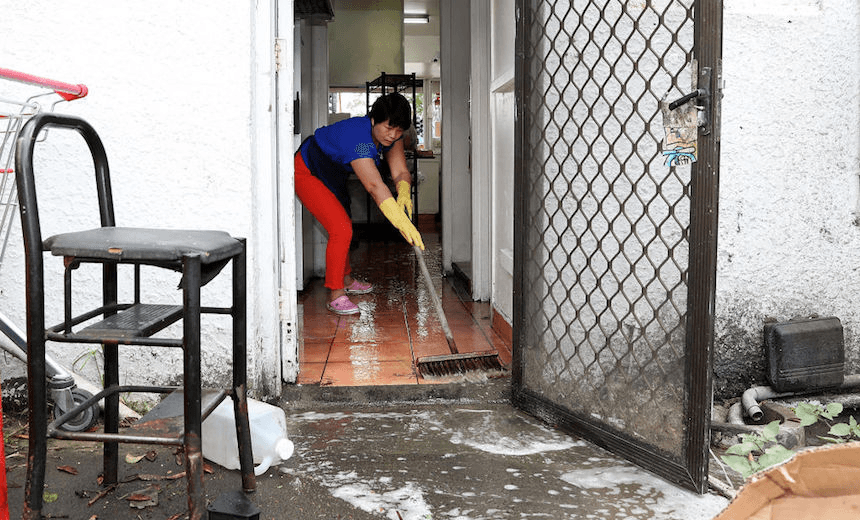As the number of cases of typhoid in Auckland approaches 20, some people are asking if the outbreak is related to all the heavy rain and flooding we’ve been having. It’s a good question, and the answer is almost certainly no. Dr Siouxsie Wiles explains why.
Typhoid is caused by the bacterium Salmonella Typhi (or S. Typhi). You’ve probably heard of Salmonella before – it’s the name of a family of bacteria made up of thousands of different varieties. Salmonella Typhi is just one of them. Some varieties of Salmonella are carried by poultry, which is why you should never eat undercooked chicken or store your raw fruit and veg near raw meat. You can get a quite awful case of vomiting and diarrhoea if you do. That’s salmonellosis though, not typhoid.
S. Typhi only infects humans and spreads faecal-orally. This means the bacterium is found in the faeces of an infected person. If it then gets into someone else’s mouth it can give them typhoid. People with typhoid can shed S. Typhi in their faeces before they have any symptoms of disease, while they are unwell and, if they didn’t get any antibiotics to kill the bacteria, for weeks or months after they have recovered. A small number of people can go on to become chronically infected, intermittently shedding S. Typhi for the rest of their lives while showing no symptoms.
There are three ways someone shedding S. Typhi can give other people typhoid. The first is if they don’t wash and dry their hands properly after going to the toilet (or change a nappy, if the shedder is a baby) and then have very close contact with other people. This is probably the hardest way to get typhoid. The second way is if the infected person doesn’t wash and dry their hands properly after going to the toilet and then handles or prepares food for other people. Before casting any judgements, ask yourself how often you follow the guidelines for proper hand hygiene.
The third way typhoid spreads is if people shedding the bacteria don’t have access to proper toilet facilities and contaminate lakes and rivers that are also used for drinking water. This last scenario is the reason typhoid affects millions of people each year around the world. Because we have good sanitation in New Zealand, and our drinking water is treated to kill or remove any microbes, this last scenario is not how the people in Auckland would have caught typhoid. Regardless of the rain and flooding. If there had been issues with faecal contamination of our water supply, we’d have most likely seen cases of E. coli and other food poisoning bacteria, not S. Typhi.
Eating contaminated food is still the most likely cause of the Auckland outbreak. While I think it’s safe to say the Auckland Regional Public Health Service have utterly blown the public communication side of the outbreak, public health officials will be working really hard behind the scenes to trace the source. But it might not be so easy. In 2015, health officials reported a small typhoid outbreak in Colorado – all three patients had no history of travel to anywhere with typhoid and weren’t known to each other. A scan of their receipts showed they’d all eaten at the same restaurant within a few days of each other. Bingo! One of the restaurant workers had S. Typhi in a faecal sample they provided. But they also provided quite a few samples without the bacteria. Turns out they weren’t shedding it all the time. And in another twist, it was 15 years since they’d travelled to a country with typhoid!
Outbreaks are scary, especially when someone has died and the authorities in charge give off the impression they are incompetent. Finding the source of an outbreak is no easy task, but the public health people will be doing their best. In the meantime, there’s no need to rush off to the homeopaths who seem to think that their “magical” water drops and sugar pills can keep typhoid at bay. Instead, brush up on your hand washing technique – that’ll protect you from a whole heap of infectious microbes.
Siouxsie Wiles’ new book on infectious diseases in New Zealand, Antibiotic Resistance: The End of Modern Medicine?, is published on April 10.
The Spinoff’s science content is made possible thanks to the support of The MacDiarmid Institute for Advanced Materials and Nanotechnology, a national institute devoted to scientific research.

